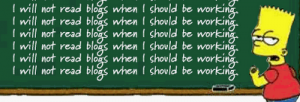 The notion of “homeschool” always confounds me.
The notion of “homeschool” always confounds me.
There’s home, where you sleep and eat and watch t.v. in your underpants. And there’s school, where you spend daytime hours with people born in the same year as you, torturing each other with complex social hierarchies that change by the minute and occasionally learning things like the Pythagorean Theorem and forgetting them right after the test. Putting the two together sounds like a terrible idea, like okra chip sock-flavored ice cream.
Yesterday’s Forward article by Kate Fridkis about her experience as a Jewish homeschooler amongst fundamental Christians got me thinking about this again, and all I have to say is that her mother must have possessed superpowers or a very large cupboard full of Xanax.
Of course, there are plenty of families that make it work, and I am in awe of them.
While many families choose to homeschool for religious reasons, but two favorites that I know choose it out of convenience and for its freedom on their time. Their children are well-mannered and intelligent, doing their academic work on laptops whenever they choose and pursuing other interests. One or both parents work from home while everyone goes about their day peacefully and productively. They make it look really easy, organic and fun. I find this fascinating and amazing. And totally unrealistic.
First off, my children are smarter than me. And they know it. Establishing myself as a person of authoritarian superiority in their minds would require a personality transplant. Secondly, my chosen vocation requires that I sit at my computer for hours, uninterrupted by questions about how to remove a crayon from a dog nostril. Thirdly, the house stays much cleaner when they’re eating paste in a classroom with their peers. Furthermore, school classrooms enjoy keeping gerbils and other rodents in cages, and that is just not going to happen here.
Mostly, our family truly enjoys and benefits from a community that grows out of a school where many parents volunteer in the classroom, spend Saturdays planting flowers along the front walkway and hang out after school comparing notes on life and watching the children climb in the giant oak tree in the park across the street, swearing one day we’ll climb it ourselves. It’s not perfect (yo, SCCPSS, maybe one day you’ll fix the plumbing in the upstairs boy’s bathroom before the mold carries a urinal down the hall?) but it feels like home.
When we first moved to Savannah, I had the gut-shredding experience of finding a spot in first grade for my son in the Chatham County School System, which ranks 128 out of 164 in the state of Georgia. This city—as does our country—blazes with a vast socio-economic gap that among other iniquities, has translated in a tendency for the wealthy people those who can to send their children to various secular and religious private schools, leaving the public school system for those unable or unwilling to spend thousands of dollars in tuition and/or naively committed to the democratic notion of providing education for all through our taxes.
Here public schools operate as a “magnet system” that allows parents choose a school for a particular “specialty,” be it traditional academics, alternative curriculum, performing arts or science. This sounds fine in theory but basically creates a neurotic climate of competition and dysfunction as families who care scramble to get into the “good” schools even though it may mean their kids are on a schoolbus for three hours a day. There are lotteries and waiting lists and letters of recommendation and bitter disappointments. It’s like “Toddlers and Tiaras” with No. 2 pencils and stone-faced administrators with helmet hair.
Already reeling from the culture shock of moving to the South from the insulated liberal nest of Northern California, I melted into a lump of hippie despair when informed that my son was 79th on the waiting list for the highly-coveted public Montessori I had carefully researched the previous spring. (More on Maria Montessori’s educational philosophy here.) I dutifully visited the school we were “zoned” for but left after the office assistant greeted me with four missing teeth and six “ain’t”s in five minutes. For three weeks I shlepped my 6 year-old and 2 year-old from school to school in the hell of August, shopping for another magnet that didn’t feel like a daycare run by the devil.
During this period, I considered homeschooling him. He is a bright, curious person with a flair for language and music. I imagined creating a classroom area off the kitchen with some blackboard paint where I would cheerfully teach him addition and subtraction and a place to blow up stuff with a chemistry set. He would complete lessons online quietly while his sister napped and I wrote the world’s greatest novel. We would take incredible field trips to the beach and wear pajamas on rainy days. I would explain in gentle tones the cycles of the weather and continents of the globe. We would play games to memorize all the state capitals and parts of flowers.
Sounds fabulous, right? But then he had a huge meltdown in the grocery store about choosing a juicebox flavor right as his sister ate a stray M&M off the floor in the meat aisle and my adrenals started prickling and I was overwhelmed with the urge to clear a spot on the juice shelf so I could sit down and weep. I realized we would be together all the time, EVERY DAY, and I would have to generate lessons constantly to stay ahead of their amazing electric brains. The more I thought about it, the more terrified I got.
Fortunately, the Montessori called the next morning with a first grade miracle spot. My kid would get the education I wanted for him (and four years, later his sister) with all kinds of cool materials and encouragement to follow his interests and guidance from trained professionals who know how to redirect a broken pencil tantrum into a teaching moment.
It was humbling to admit that I was not prepared to be the sole provider of my children’s education. People go to school to learn how to teach; I arrived into motherhood barely equipped, armed only with a loving heart and the Internet. I admire so very much the parents with courage and wherewithal to figure it out and do it. Maybe it’s because for the most part, Jewish culture values educational institutions and group study; more likely it’s just me. I wish I had the patience and compassion and desire and faith to homeschool my kids. But I don’t.
And I forgive myself for it. They learn so much at home with us—how to garden, cook, care for chickens, communicate their needs using English instead of Whinese, play music and just plain play. I feel pretty good about biking the 11 blocks to the brick schoolhouse 181 days a year, pointing out the magnolia trees and reminding everyone to look both ways. I loved school, and my kids do, too. It’s been a lovely summer, full of bike rides and fishing and waterfalls and teaching moments.
But I’m damn ready to have the house back.
 There is no color palette like an Arizona sunset, all cantelopes and indigos and lilacs.
There is no color palette like an Arizona sunset, all cantelopes and indigos and lilacs. 

